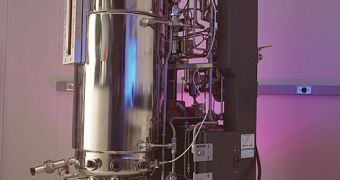In a bid to expand its line of research into the therapeutic potential of adult stem cells, officials at Emerging Healthcare Solutions, Inc. (EHSI) have just signed a license agreement with NASA, giving the company the right to use bioreactors developed by the space agency for its studies.
The main object of the deal is the Intrifuge Rotary Cell Culture System (IRCCS), a NASA bioreactor featuring a rotating wall, that was originally developed by the federal agency to grow human cells in a weightlessness simulator.
According to NASA, any cells grown in this machine, including stem cells, look and behave more human than cultures grown inside the standard tool used for such research, the Petri dish.
Under the new license agreement, EHSI can use the bioreactor in China, India, Costa Rica, Panama, Poland, Germany and all of South America, SpaceRef reports.
NASA originally awarded the IRCCS license to a company called Regenetech, from which EHSI obtained a deal called a sublicense. The latter justified its need for the agreement by saying that stem cell research is the way of the future as far as medical treatments go.
“Innovative technology is essential to the development of new and advanced medical treatments,” explains Cindy Morrissey, who is the President and CEO of EHSI.
“Our immediate plan is to send this NASA bioreactor to China, where we'll contract a firm to use the culture system to expand adult stem cells for use in clinical trials of the Rutherford Procedure,” she adds.
The Rutherford Procedure is a liver disease, to which experts at the company say they are developing a revolutionary new cure that uses stem cells. It is, in fact, a groundbreaking, organ-regeneration treatment, EHSI experts reveal.
“However, we envision using this unique technology to develop stem-cell cures and treatments for many illnesses in the future,” Morrissey explains.
The new treatment option will use proton beams to kill off diseases liver tissue, and then apply adult stem cells in the affected areas. The cells will pick up information from the environment, and start to develop into new liver cells.
A license to develop and market the Rutherford Procedure was already sold earlier this month to the company Celulas Genetica, which EHSI subsequently bought.

 14 DAY TRIAL //
14 DAY TRIAL //